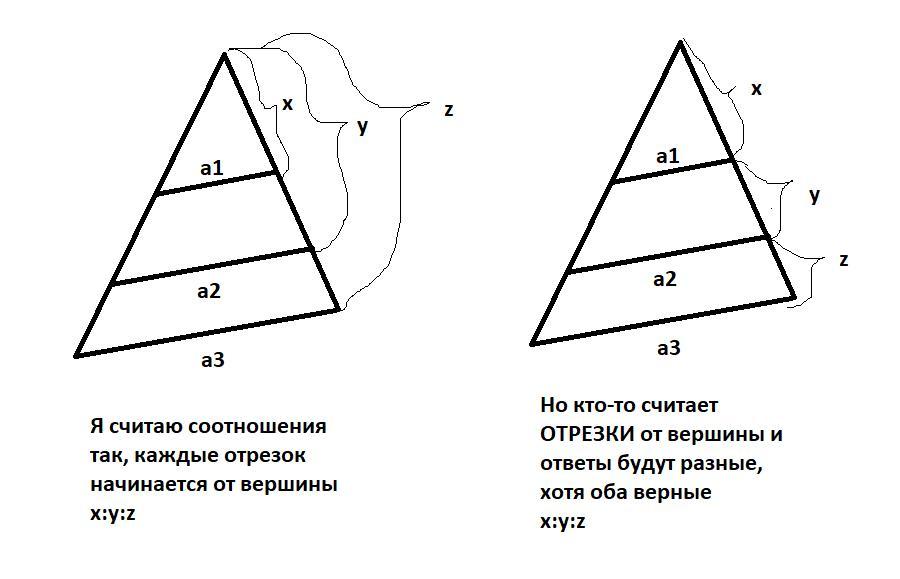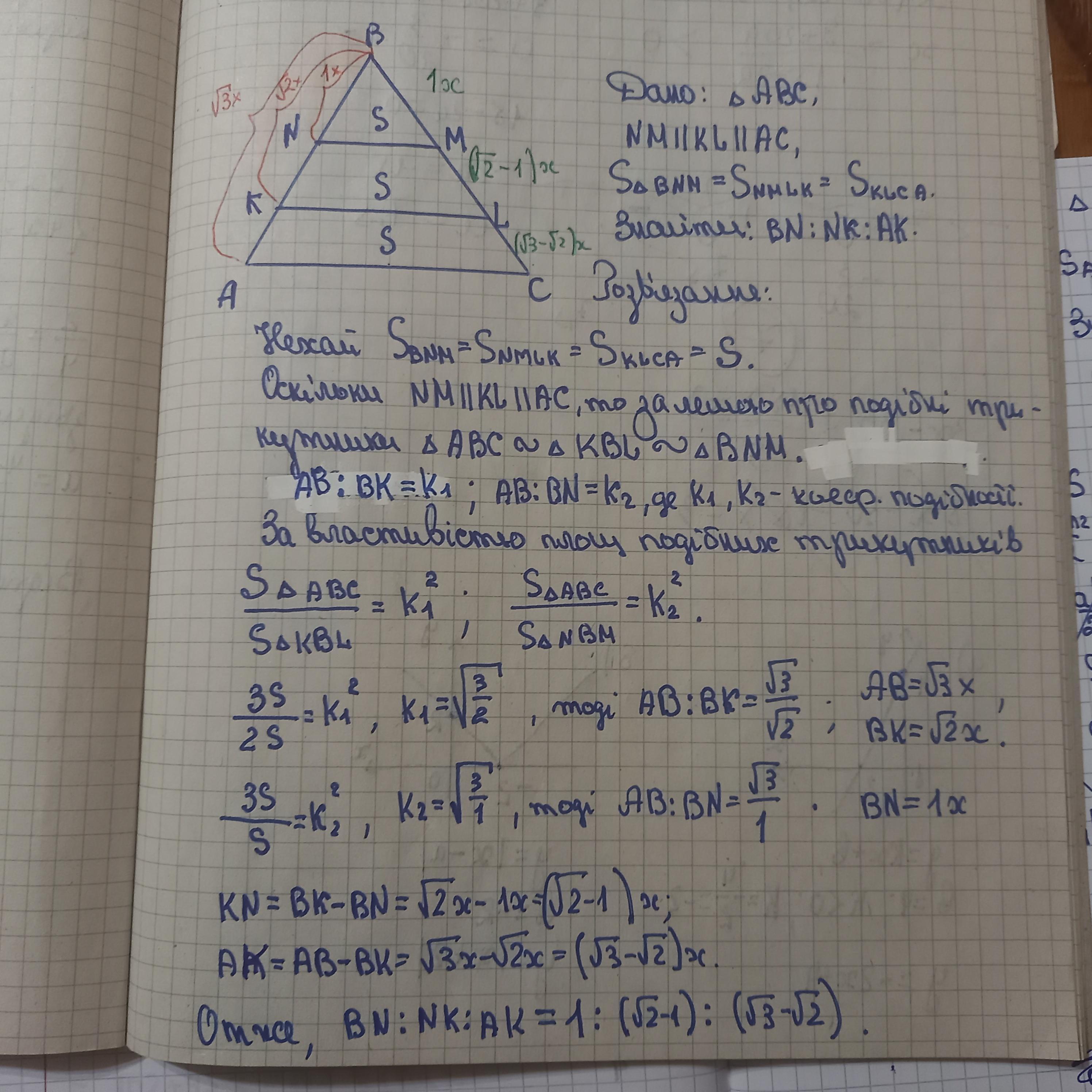У якому відношенні, рахуючи від вершини, треба поділити бічну сторону
трикутника двома прямими, паралельними основі, щоб площа трикутника
була поділена на три рівні частини?
Ответы
Ответ:
Площадь треугольника равна половине этого основания (которому параллельны две прямые) на опущенную на него высоту. Точно так же с теми треугольниками, которые получатся. Понятно, что все треугольники будут подобны, потому и их боковые стороны и высота будут пропорциональны друг другу. Пусть площадь самого маленького треугольника S1 и его основания a1, высота h1 и т.д., тогда
3S1=S3, a из подобия a1/a3=h1/h3
2S1=S2, a из подобия a1/a2=h1/h2
3a1h1/2=a3h3/2
3a1*a1h3/a3=a3h3
3a1²=a3²
a1=a3/√3
Аналогично
2a1h1/2=a2h2/2
2a1*a1*h2/a2=a2h2
2a1²=a2²
a2=√2a1=√2a3/√3
Итого
a1=a3/√3
а2==√2a3/√3
a3=a3 - странно :)
Именно в таком же соотношении будет делиться боковая сторона, если мы будем считать от вершины.
√3/3: √6/3 : 1 - избавился от иррациональности в знаменателе.
Внимание!!!! Смотри картинку с возможными разночтениями
Объяснение:

Відповідь: фото.
Пояснення:
розв'язання завдання додаю
